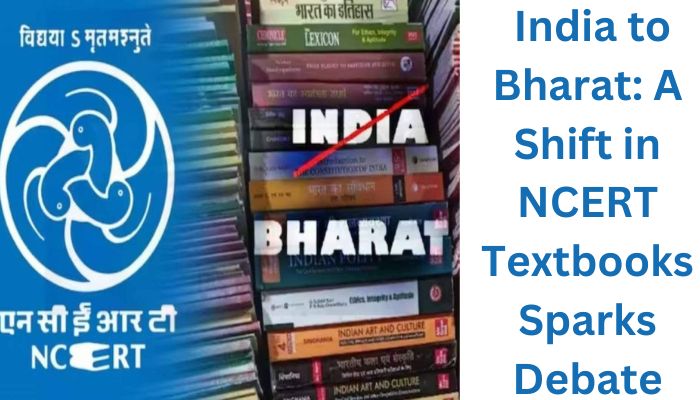The replacement of ‘India’ with ‘Bharat’ in NCERT school textbooks has ignited a nationwide debate. Some view it as a move to honor cultural heritage, while others see it as an unnecessary political agenda that might confuse students.
India, a diverse and culturally rich nation, boasts a history that spans millennia, encompassing ancient civilizations, colonial rule, and eventual independence. This transformation is mirrored in the transition from the use of ‘India’ to ‘Bharat’ in NCERT school textbooks.
This shift has stirred discussions, with proponents arguing for the preservation of culture and national identity. Opponents, on the other hand, express concerns regarding practicality and inclusivity. Below, we present the viewpoints of teachers and students concerning this change.
According to an educator from Chandra Happy Hours Academy, “The replacement of ‘India’ with ‘Bharat’ in school textbooks is a step towards respecting our historical and cultural roots, fostering a sense of national pride. Teaching our children about ‘Bharat’ instead of ‘India’ can help them connect with their heritage and understand the profound historical significance of our country.”
A teacher from Nainital High School supports this view, stating, “The shift from ‘India’ to ‘Bharat’ in educational materials encourages students to appreciate the linguistic and cultural diversity that defines our nation. Using ‘Bharat’ in textbooks represents not only a terminological alteration but a move towards promoting a more authentic representation of our nation’s identity.”
On the other hand, there are dissenting opinions. Vandana Malhotra, a senior school teacher, remarks, “The decision to alter ‘India’ to ‘Bharat’ in textbooks appears more like an unnecessary political agenda rather than an educational enhancement. This change could confuse students and disrupt their familiarity with the term ‘India’ in their textbooks.”
“It raises questions about whether this change will yield significant educational benefits and whether it might cause more confusion than clarity. This transition appears to be more political than a well-thought-out educational strategy, diverting attention from genuine educational reforms,” notes a school teacher in Kerala.
What do students have to say? While some students support this change, others consider it unnecessary and politically motivated.
Aanya, a Class 10 student, applauds the alteration, stating, “Renaming India as Bharat in our school textbooks is a powerful step in embracing our cultural roots and promoting our rich heritage.”
Arjun, a student in Class 9, believes, “As a student, I think this change encourages us to connect with our past and grasp the significance of our country’s original name, Bharat. Using Bharat in our textbooks is a small yet vital change that can bridge the gap between our modern education system and our ancient cultural heritage.”
However, Priya, a Class 10 student, disagrees, saying, “Our education system should focus on more critical issues instead of renaming our country in textbooks. It’s a waste of time and resources. I don’t understand why we need to change something as fundamental as the name of our country in textbooks. It’s unnecessary and doesn’t enhance our education.”
The transition from ‘India’ to ‘Bharat’ in school textbooks reflects an endeavor to reconnect with India’s cultural and historical heritage. While this change stems from the desire to preserve cultural identity and promote national pride, it must be carried out thoughtfully to ensure inclusivity and relevance.
Balancing tradition with modernity is a delicate task, and policymakers and educators should collaborate to strike this balance effectively. Ultimately, the use of ‘Bharat’ alongside ‘India’ can serve as a bridge between the past and the present, uniting India’s diverse population under a shared sense of cultural and historical heritage.

